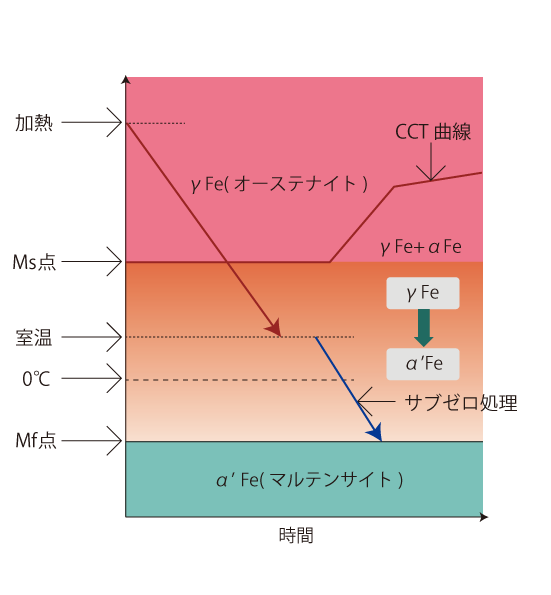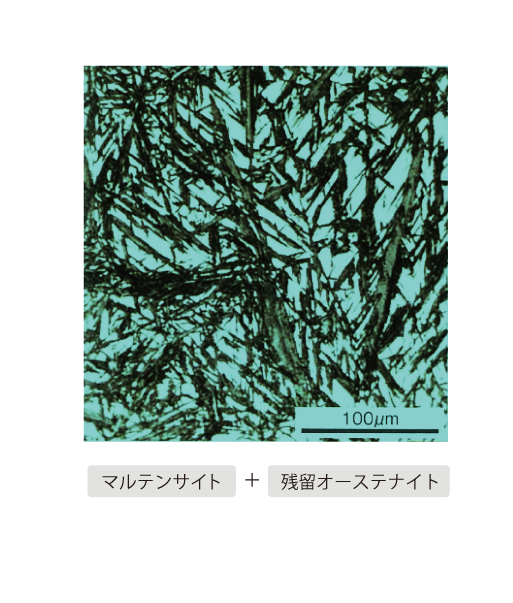 Tamayakin’ initiative
Tamayakin’ initiative

Residual austenite and sub-zero treatment

 Return to list
Return to list
Overview.
A large amount of residual austenite can cause many hindrances, such as reduced hardening hardness, which can be avoided by subzero treatment.
01 The Merits and Demerits of Residual Austenite
Because high-carbon, high-alloy ropes have low Ms and Mf points, a large amount of residual austenite (γR) may be produced by quenching. A large amount of γR can cause a number of problems such as lack of wear resistance and aging. This is especially a problem with SKD11, which is used in cold forming dies.
The merits and demerits of a large amount of residual austenite
| Fabric is soft and has poor abrasion resistance |
| Dimension shrinkage of quenched and tempered product |
| Product dimensions are not stable due to aging |
| Hard to stick to the fixing magnet of the surface grinder during grinding process |
| Susceptible to grinding cracks during grinding process |
| Superior ductility and toughness |
02 What is Sub-Zero Processing?
Sub-zero treatment refers to the operation of cooling to a temperature below 0°C and is usually performed immediately after quenching and before tempering. Subzero treatment is often used for cutting tools, dies and gauges, etc., and its purpose is to improve wear resistance and prevent aging.
Microstructural Changes in High Carbon and High Alloy Steels during Quenching and Cooling

MICROSCOPIC MICROSTRUCTURE OF SK105 QUENCHED FROM 1050°C

Needle-shaped martensite and residual austenite can be observed.
In the quenching process, the fabric structure in the heated condition is austenite, and the Mf point of these grades is below 0 °C, so the quenched structure at room temperature is martensite plus austenite. The austenite at this point is called γR, and the subzero treatment is to cool further than room temperature, ideally to 100% martensite.
03 Effects of Sub-Zero Processing
As the quenching temperature increases, the hardness increases. However, as shown in the figure below, the hardness conversely decreases when the temperature exceeds the temperature at which the maximum hardening hardness is obtained.
zEffect of quenching temperature on hardness and γR content of SKD11

A higher X-ray intensity ratio indicates a higher amount of γR.
Since this decrease in hardness is caused by an increase in soft γR, the hardness can be restored by subzero treatment.
EFFECT OF SUB-ZERO PROCESSING TEMPERATURE ON MAGNETIC PROPERTIES OF SKD11

The change in magnetic properties indicates that γR decreases and martensite content increases with lower sub-zero temperature.
The above figure shows the martensitization of γR in SKD11 at sub-zero temperatures, using the difference in magnetic properties between martensite and austenite. It can be seen that the maximum permeability and saturation magnetic flux density increase with sub-zero treatment, and the lower the treatment temperature, the higher these values become.



